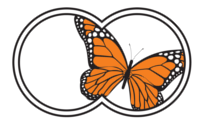First author: Last name of the first author
Type: Article or book chapter
Year: Publication year
Source: Journal or book
Category: The broad scope of the article.
- Commentary or review: No new analyses presented
- Monarch research: Data specifically on the monarch
- Environmental Performance: Individual performance relative to temperature, host plant quality, or other environmental influences. If the primary focus was on the effects of an environmental influence on “population dynamics”, then the paper was classified under that category.
- Evolution/Range: Monarch evolution, range expansion, or island colonization.
- GMO/Toxin: Impacts of GMOs (genetically modified organisms) or pesticides on monarch performance.
- Migration: Patterns of or mechanistic factors related to seasonal migration (other than “orientation”), but not including patch to patch movements within a season (“population dynamics”).
- Natural enemies: Predation or parasitism in monarchs. Studies focused solely on predator or parasite biology are categorized as “supporting research” and not included here.
- Orientation: Patterns or mechanisms of how monarchs orient their flight.
- Overwintering dynamics: Behavior or physiology during the overwintering period, but not on population dynamics (e.g., mortality, classified under “population dynamics”).
- Physiology/behavior: Phenomenological studies of mating/development/physical defenses/sequestration/morphology. If these phenomena were studied in relation to “environmental performance” or “overwintering”, they were placed in those categories.
- Population dynamics: Any aspect of population trends, including declines, changes in population size from one stage to the next, or small-scale movements (not “migration”).
- Resource use: Monarch use of resources where the focus is on monarch performance (e.g., preference and performance studies focused on roost choice, host plant choice, etc.). Studies of chemical sequestration were categorized under “physiology/behavior”.
- Supporting research: Papers that did not present data on monarchs specifically, but focused on monarch habitat, resources, natural enemies, conservation activities, social dimensions
- Conservation/social dimensions
- Habitat
- Hostplant biology
- Hostplant dynamics
- Other
- Techniques: For studying monarchs, including lab or statistical techniques
- Other: Papers that present data on monarchs or other Danainae, but monarchs aren’t the main focus of the paper
Research topic (monarch research and supporting research only): Specific research topic.
Geographic Focus (field studies only): The geographic setting for field research.
- Australia/NZ: Australia and New Zealand
- Caribbean Islands/Bermuda
- Central/South America (Includes Mexico south of the MBBR)
- Eastern Breeding: The eastern breeding grounds (roughly east of Rocky Mountains, north of MBBR)
- Europe/Africa (Includes the Canary Islands)
- Florida/Cuba: The largely sedentary population located in Florida and Cuba
- Global
- Mexican Overwintering: The Monarch Butterfly Biosphere Reserve (MBBR; includes all overwintering colonies, even those not within the boundaries of the reserve)
- Mideast/Asia
- Pacific Islands/Japan
- Western Breeding: The western breeding grounds (roughly west of Rocky Mountains, outside CA-OW)
- Western Overwintering: Overwintering colonies of the western population (mostly along the California coast)
Monitoring Data Used: The use of data from monitoring or public data efforts.
